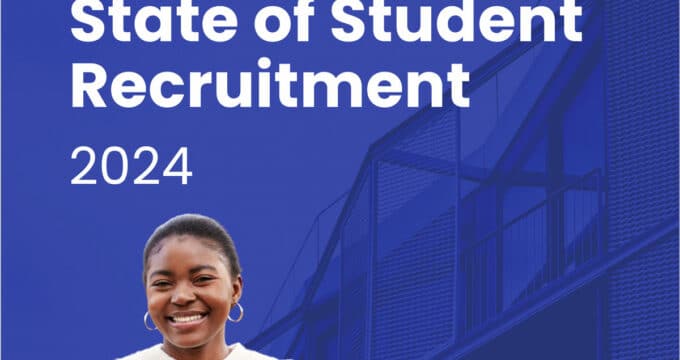The new rules of digital marketing
Both agents and educators have reported a steady increase over the past three years in the number of students recruited via digital channels. In the 2017 edition of the ICEF i-graduate Agent Barometer, for example, one in five agents reported that 60% or more of their leads came from online sources. Roughly another third of agents indicated that digital channels now generate between 30% and 60% of all new business. Despite online recruitment being relatively new, research and experience in this area are growing and we are now much more aware of how prospective students use digital channels to seek and select overseas study options.
Lead with mobile
Students use mobile devices heavily during the discovery phase of the college search process. In many markets, the majority of prospects make their first visits to college websites on their mobile devices. Significant proportions even apply to institutions from their phones. Institutional websites must therefore deliver an excellent mobile user experience. Required information – including details about programmes, admissions, and student life – must be easy to find. Key conversion points, including inquiry and application functions as well as a prominent “book now” or “apply now” button, should be well optimised for mobile.
Different channels at different times
There is a distinction to be made between digital tools – such as online search and school selection sites – and social media. Research from Chegg has demonstrated that the former are highly influential in the discovery phase of students’ research, when students are learning about different institutions and trying to identify schools that could be a good fit. Social media then typically comes into play after that initial discovery process as students investigate their choices more fully.
The importance of unbranded search
Google research consistently finds that unbranded search is very common in the early stages of prospective students’ discovery process. As many as 9 in 10 prospects don’t have a particular school in mind when they begin their search process and their search behaviour reflects this lack of brand orientation. Rather than searching for a specific institution, for example, prospects are far more likely to search by programme name or type, often in association with a particular country or region (e.g., “bachelor’s degree in computing science in London”).
A big role for social
How and when students use social media varies from country to country. In some markets, such as China and Russia, home-grown social networks are the clear leaders – for example, WeChat and QQ (Qzone) in China and VK (VKontakte) in Russia. In other countries, the major global platforms dominate. Facebook, for instance, has been widely adopted in the Middle East, with 89% of web users active on the platform. In terms of how students search and make decisions as they plan for study abroad, social media channels are most commonly used to gather recommendations and to open a window into student life at a particular institution or school. In other words, prospective students use social channels in part to see if they would fit in and be comfortable on a campus or in a community. Social is also a fluid space and the popularity of individual platforms can shift quickly (see “Why Instagram is the perfect place to connect with students,” page 75); yesterday’s must-attend online spaces can suddenly feel old. The rules of engagement between brands and students are often in flux as well. For marketers, this means that social media strategies need regular tune-ups to keep pace with fast-moving and mobile audiences. It also means keeping in mind that all social content should be designed with student audiences in mind. The 70/20/10 rule is a great guideline in this respect: 70% of social posts should be designed to entertain and engage (e.g., vignettes of campus life, videos, jokes, student commentary), 20% of content should be useful information (e.g., deadlines, policy updates, new programme announcements), and 10% should be collaborative (e.g., calling for opinions, participation in online polls, or other student content).
Keep your eye on your own website
Despite all the emphasis on search marketing, social media, and other digital channels, the institutional website remains a key platform for student recruitment. In one recent study from QS, 9 in 10 prospective students in the UK rated such official sites as “essential” or “very important” in their search and decision-making process. With students still relying heavily on the institutional website, it’s crucial to highlight the information they need the most. A large percentage of respondents in the QS study reported having trouble finding admissions information or course details on institutional sites. Internet users are notoriously short on patience, and this is particularly the case for millennial users on mobile devices. Google research has found that 6 in 10 mobile users will leave a site if they don’t find what they are looking for immediately. This reflects the observation of one prospect in the QS survey, who said, “If a lot of the detailed information is missing [on a website], I choose not to apply.”
Make it personal
Finally, remember that student recruitment is often highly personal and the product of meaningful connections between students, educators, institutions, agents, and other partners. Use technology not as a substitute for people but rather as a way to reflect and reinforce those personal connections. This means being responsive and agile in your use of social media and other online channels, and not shying away from opportunities to incorporate a personal voice in online interactions. As social media specialist Eric Stoller advised at the 2017 NAFSA conference, “Invest the same passion, energy, commitment, and intention [in social] as you would in any other communications channel.”















